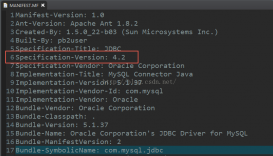Java7中文件IO发生了很大的变化,专门引入了很多新的类:
|
1
2
3
4
5
6
7
8
9
|
import java.nio.file.DirectoryStream;import java.nio.file.FileSystem;import java.nio.file.FileSystems;import java.nio.file.Files;import java.nio.file.Path;import java.nio.file.Paths;import java.nio.file.attribute.FileAttribute;import java.nio.file.attribute.PosixFilePermission;import java.nio.file.attribute.PosixFilePermissions; |
......等等,来取代原来的基于java.io.File的文件IO操作方式.
1. Path就是取代File的
A Path represents a path that is hierarchical and composed of a sequence of directory and file name elements separated by a special separator or delimiter.
Path用于来表示文件路径和文件。可以有多种方法来构造一个Path对象来表示一个文件路径,或者一个文件:
1)首先是final类Paths的两个static方法,如何从一个路径字符串来构造Path对象:
|
1
2
3
4
5
|
Path path = Paths.get("C:/", "Xmp"); Path path2 = Paths.get("C:/Xmp"); URI u = URI.create("file:///C:/Xmp/dd"); Path p = Paths.get(u); |
2)FileSystems构造:
|
1
|
Path path3 = FileSystems.getDefault().getPath("C:/", "access.log"); |
3)File和Path之间的转换,File和URI之间的转换:
|
1
2
3
4
|
File file = new File("C:/my.ini");Path p1 = file.toPath();p1.toFile();file.toURI(); |
4)创建一个文件:
|
1
2
3
4
5
6
7
8
9
|
Path target2 = Paths.get("C:\\mystuff.txt");// Set<PosixFilePermission> perms = PosixFilePermissions.fromString("rw-rw-rw-");// FileAttribute<Set<PosixFilePermission>> attrs = PosixFilePermissions.asFileAttribute(perms);try { if(!Files.exists(target2))Files.createFile(target2);} catch (IOException e) { e.printStackTrace();} |
windows下不支持PosixFilePermission来指定rwx权限。
5)Files.newBufferedReader读取文件:
|
1
2
3
4
5
6
7
8
9
10
|
try {// Charset.forName("GBK") BufferedReader reader = Files.newBufferedReader(Paths.get("C:\\my.ini"), StandardCharsets.UTF_8); String str = null; while((str = reader.readLine()) != null){ System.out.println(str); } } catch (IOException e) { e.printStackTrace(); } |
可以看到使用 Files.newBufferedReader 远比原来的FileInputStream,然后BufferedReader包装,等操作简单的多了。
这里如果指定的字符编码不对,可能会抛出异常 MalformedInputException ,或者读取到了乱码:
|
1
2
3
4
5
6
7
8
9
|
java.nio.charset.MalformedInputException: Input length = 1 at java.nio.charset.CoderResult.throwException(CoderResult.java:281) at sun.nio.cs.StreamDecoder.implRead(StreamDecoder.java:339) at sun.nio.cs.StreamDecoder.read(StreamDecoder.java:178) at java.io.InputStreamReader.read(InputStreamReader.java:184) at java.io.BufferedReader.fill(BufferedReader.java:161) at java.io.BufferedReader.readLine(BufferedReader.java:324) at java.io.BufferedReader.readLine(BufferedReader.java:389) at com.coin.Test.main(Test.java:79) |
6)文件写操作:
|
1
2
3
4
5
6
7
8
|
try { BufferedWriter writer = Files.newBufferedWriter(Paths.get("C:\\my2.ini"), StandardCharsets.UTF_8); writer.write("测试文件写操作"); writer.flush(); writer.close();} catch (IOException e1) { e1.printStackTrace();} |
7)遍历一个文件夹:
|
1
2
3
4
5
6
7
8
|
Path dir = Paths.get("D:\\webworkspace"); try(DirectoryStream<Path> stream = Files.newDirectoryStream(dir)){ for(Path e : stream){ System.out.println(e.getFileName()); } }catch(IOException e){ } |
|
1
2
3
4
5
6
7
8
9
|
try (Stream<Path> stream = Files.list(Paths.get("C:/"))){ Iterator<Path> ite = stream.iterator(); while(ite.hasNext()){ Path pp = ite.next(); System.out.println(pp.getFileName()); } } catch (IOException e) { e.printStackTrace(); } |
上面是遍历单个目录,它不会遍历整个目录。遍历整个目录需要使用:Files.walkFileTree
8)遍历整个文件目录:
|
1
2
3
4
5
6
7
8
9
10
11
12
13
14
15
16
17
18
19
20
|
public static void main(String[] args) throws IOException{ Path startingDir = Paths.get("C:\\apache-tomcat-8.0.21"); List<Path> result = new LinkedList<Path>(); Files.walkFileTree(startingDir, new FindJavaVisitor(result)); System.out.println("result.size()=" + result.size()); } private static class FindJavaVisitor extends SimpleFileVisitor<Path>{ private List<Path> result; public FindJavaVisitor(List<Path> result){ this.result = result; } @Override public FileVisitResult visitFile(Path file, BasicFileAttributes attrs){ if(file.toString().endsWith(".java")){ result.add(file.getFileName()); } return FileVisitResult.CONTINUE; } } |
来一个实际例子:
|
1
2
3
4
5
6
7
8
9
10
11
12
13
14
15
16
17
18
19
20
21
22
23
24
25
26
27
28
|
public static void main(String[] args) throws IOException { Path startingDir = Paths.get("F:\\upload\\images"); // F:\\upload\\images\\2\\20141206 List<Path> result = new LinkedList<Path>(); Files.walkFileTree(startingDir, new FindJavaVisitor(result)); System.out.println("result.size()=" + result.size()); System.out.println("done."); } private static class FindJavaVisitor extends SimpleFileVisitor<Path>{ private List<Path> result; public FindJavaVisitor(List<Path> result){ this.result = result; } @Override public FileVisitResult visitFile(Path file, BasicFileAttributes attrs){ String filePath = file.toFile().getAbsolutePath(); if(filePath.matches(".*_[1|2]{1}\\.(?i)(jpg|jpeg|gif|bmp|png)")){ try { Files.deleteIfExists(file); } catch (IOException e) { e.printStackTrace(); } result.add(file.getFileName()); } return FileVisitResult.CONTINUE; } } |
将目录下面所有符合条件的图片删除掉:filePath.matches(".*_[1|2]{1}\\.(?i)(jpg|jpeg|gif|bmp|png)")
|
1
2
3
4
5
6
7
8
9
10
11
12
13
14
15
16
17
18
19
20
21
22
23
24
25
26
27
28
29
30
31
32
33
|
public static void main(String[] args) throws IOException { Path startingDir = Paths.get("F:\\111111\\upload\\images"); // F:\111111\\upload\\images\\2\\20141206 List<Path> result = new LinkedList<Path>(); Files.walkFileTree(startingDir, new FindJavaVisitor(result)); System.out.println("result.size()=" + result.size()); System.out.println("done."); } private static class FindJavaVisitor extends SimpleFileVisitor<Path>{ private List<Path> result; public FindJavaVisitor(List<Path> result){ this.result = result; } @Override public FileVisitResult visitFile(Path file, BasicFileAttributes attrs){ String filePath = file.toFile().getAbsolutePath(); int width = 224; int height = 300; StringUtils.substringBeforeLast(filePath, "."); String newPath = StringUtils.substringBeforeLast(filePath, ".") + "_1." + StringUtils.substringAfterLast(filePath, "."); try { ImageUtil.zoomImage(filePath, newPath, width, height); } catch (IOException e) { e.printStackTrace(); return FileVisitResult.CONTINUE; } result.add(file.getFileName()); return FileVisitResult.CONTINUE; } } |
为目录下的所有图片生成指定大小的缩略图。a.jpg 则生成 a_1.jpg
2. 强大的java.nio.file.Files
1)创建目录和文件:
|
1
2
3
4
5
6
7
8
|
try { Files.createDirectories(Paths.get("C://TEST")); if(!Files.exists(Paths.get("C://TEST"))) Files.createFile(Paths.get("C://TEST/test.txt"));// Files.createDirectories(Paths.get("C://TEST/test2.txt"));} catch (IOException e) { e.printStackTrace();} |
注意创建目录和文件Files.createDirectories 和 Files.createFile不能混用,必须先有目录,才能在目录中创建文件。
2)文件复制:
从文件复制到文件:Files.copy(Path source, Path target, CopyOption options);
从输入流复制到文件:Files.copy(InputStream in, Path target, CopyOption options);
从文件复制到输出流:Files.copy(Path source, OutputStream out);
|
1
2
3
4
5
6
7
8
9
10
11
|
try { Files.createDirectories(Paths.get("C://TEST")); if(!Files.exists(Paths.get("C://TEST"))) Files.createFile(Paths.get("C://TEST/test.txt"));// Files.createDirectories(Paths.get("C://TEST/test2.txt")); Files.copy(Paths.get("C://my.ini"), System.out); Files.copy(Paths.get("C://my.ini"), Paths.get("C://my2.ini"), StandardCopyOption.REPLACE_EXISTING); Files.copy(System.in, Paths.get("C://my3.ini"), StandardCopyOption.REPLACE_EXISTING);} catch (IOException e) { e.printStackTrace();} |
3)遍历一个目录和文件夹上面已经介绍了:Files.newDirectoryStream , Files.walkFileTree
4)读取文件属性:
|
1
2
3
4
5
6
|
Path zip = Paths.get(uri); System.out.println(Files.getLastModifiedTime(zip)); System.out.println(Files.size(zip)); System.out.println(Files.isSymbolicLink(zip)); System.out.println(Files.isDirectory(zip)); System.out.println(Files.readAttributes(zip, "*")); |
5)读取和设置文件权限:
|
1
2
3
4
5
6
7
8
9
10
11
12
13
14
|
Path profile = Paths.get("/home/digdeep/.profile"); PosixFileAttributes attrs = Files.readAttributes(profile, PosixFileAttributes.class);// 读取文件的权限 Set<PosixFilePermission> posixPermissions = attrs.permissions(); posixPermissions.clear(); String owner = attrs.owner().getName(); String perms = PosixFilePermissions.toString(posixPermissions); System.out.format("%s %s%n", owner, perms); posixPermissions.add(PosixFilePermission.OWNER_READ); posixPermissions.add(PosixFilePermission.GROUP_READ); posixPermissions.add(PosixFilePermission.OTHERS_READ); posixPermissions.add(PosixFilePermission.OWNER_WRITE); Files.setPosixFilePermissions(profile, posixPermissions); // 设置文件的权限 |
Files类简直强大的一塌糊涂,几乎所有文件和目录的相关属性,操作都有想要的api来支持。这里懒得再继续介绍了,详细参见 jdk8 的文档。
一个实际例子:
|
1
2
3
4
5
6
7
8
9
10
11
12
13
14
15
16
17
18
19
20
21
22
23
24
25
26
27
28
|
import java.io.BufferedReader;import java.io.BufferedWriter;import java.nio.charset.StandardCharsets;import java.nio.file.Files;import java.nio.file.Path;import java.nio.file.Paths;public class StringTools { public static void main(String[] args) { try { BufferedReader reader = Files.newBufferedReader(Paths.get("C:\\Members.sql"), StandardCharsets.UTF_8); BufferedWriter writer = Files.newBufferedWriter(Paths.get("C:\\Members3.txt"), StandardCharsets.UTF_8); String str = null; while ((str = reader.readLine()) != null) { if (str != null && str.indexOf(", CAST(0x") != -1 && str.indexOf("AS DateTime)") != -1) { String newStr = str.substring(0, str.indexOf(", CAST(0x")) + ")"; writer.write(newStr); writer.newLine(); } } writer.flush(); writer.close(); } catch (Exception e) { e.printStackTrace(); } }} |
场景是,sql server导出数据时,会将 datatime 导成16进制的binary格式,形如:, CAST(0x0000A2A500FC2E4F AS DateTime))
所以上面的程序是将最后一个 datatime 字段导出的 , CAST(0x0000A2A500FC2E4F AS DateTime) 删除掉,生成新的不含有datetime字段值的sql 脚本。用来导入到mysql中。
做到半途,其实有更好的方法,使用sql yog可以很灵活的将sql server中的表以及数据导入到mysql中。使用sql server自带的导出数据的功能,反而不好处理。
以上这篇基于java Files类和Paths类的用法(详解)就是小编分享给大家的全部内容了,希望能给大家一个参考,也希望大家多多支持服务器之家。
原文链接:http://blog.csdn.net/u010889616/article/details/52694061















